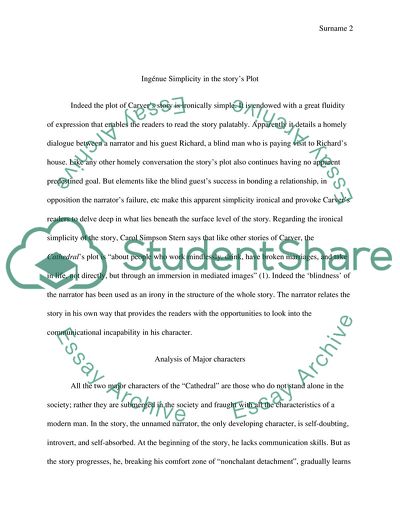Analysis of Carver's Cathedral Book Report/Review Example | Topics and Well Written Essays - 2000 words - 1. https://studentshare.org/literature/1761217-raymond-carver-cathedral
Analysis of Carver'S Cathedral Book Report/Review Example | Topics and Well Written Essays - 2000 Words - 1. https://studentshare.org/literature/1761217-raymond-carver-cathedral.


